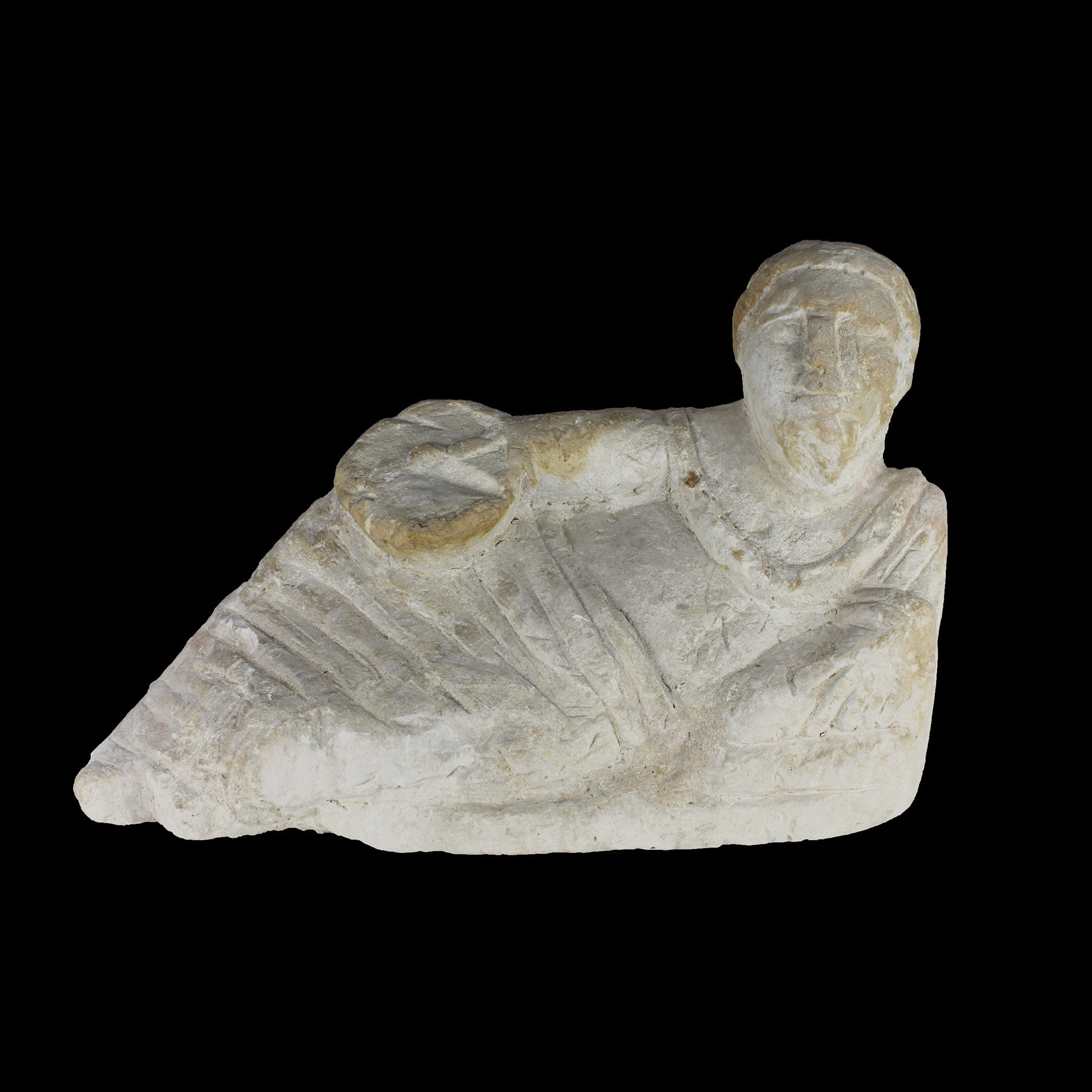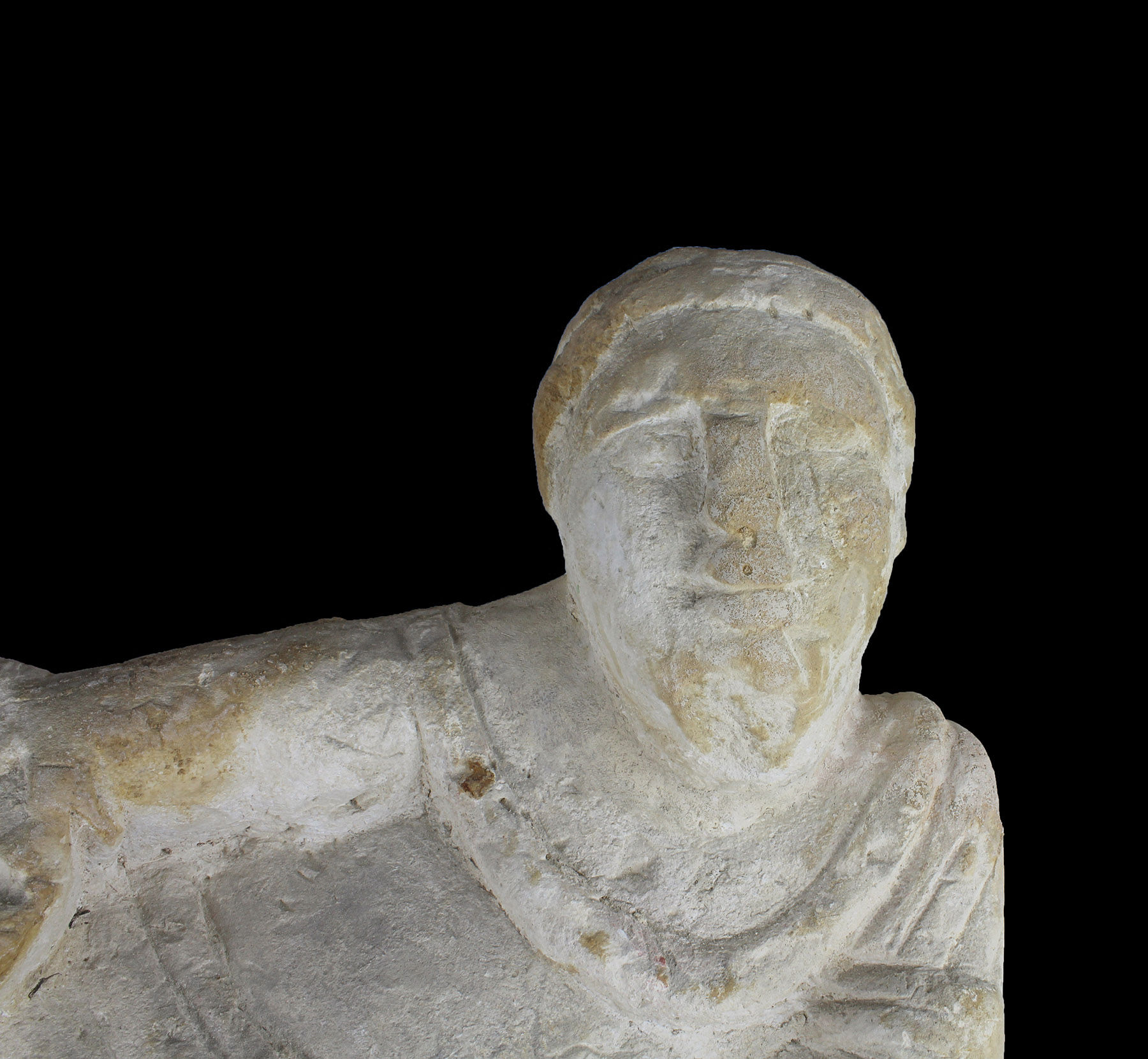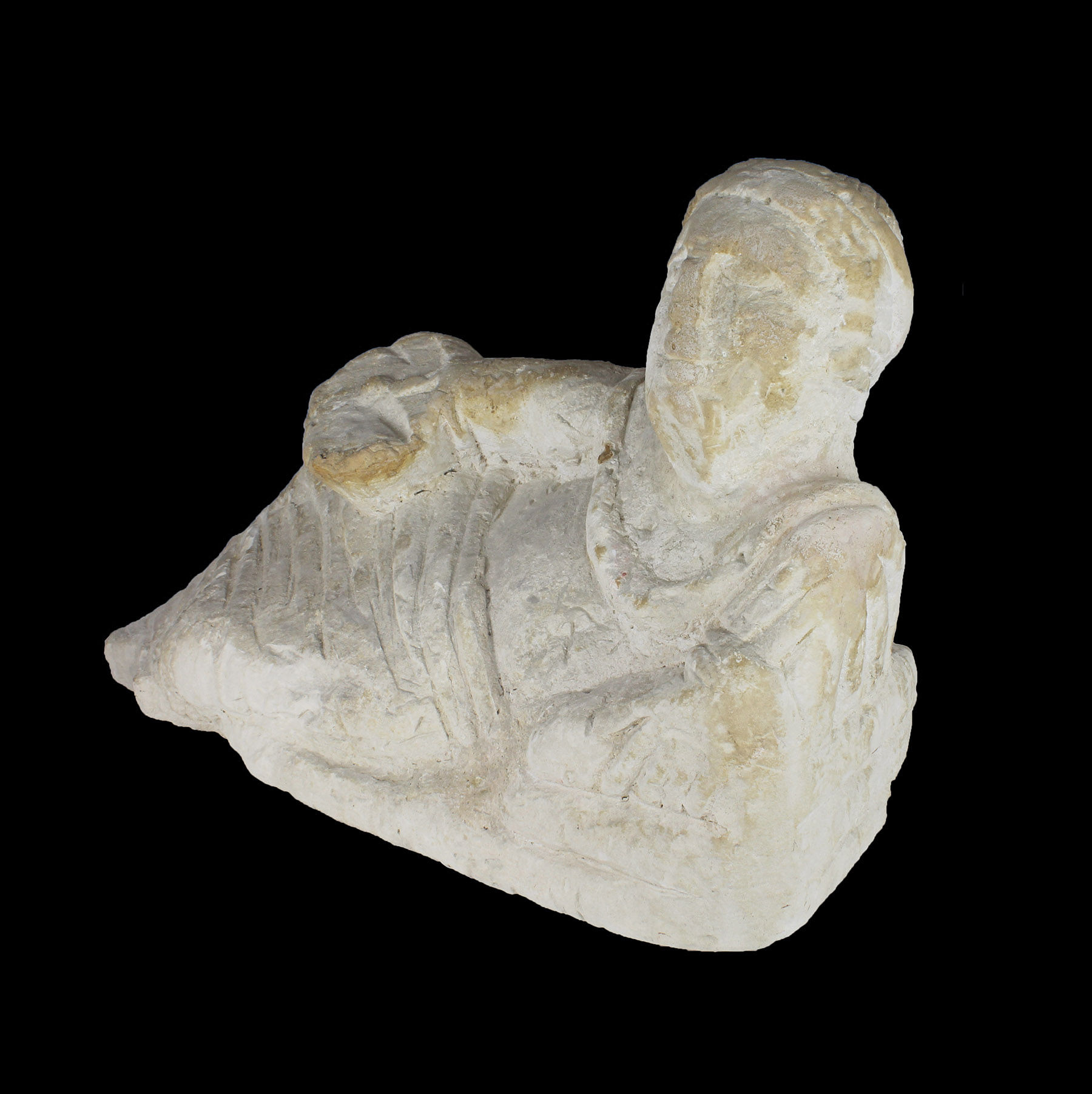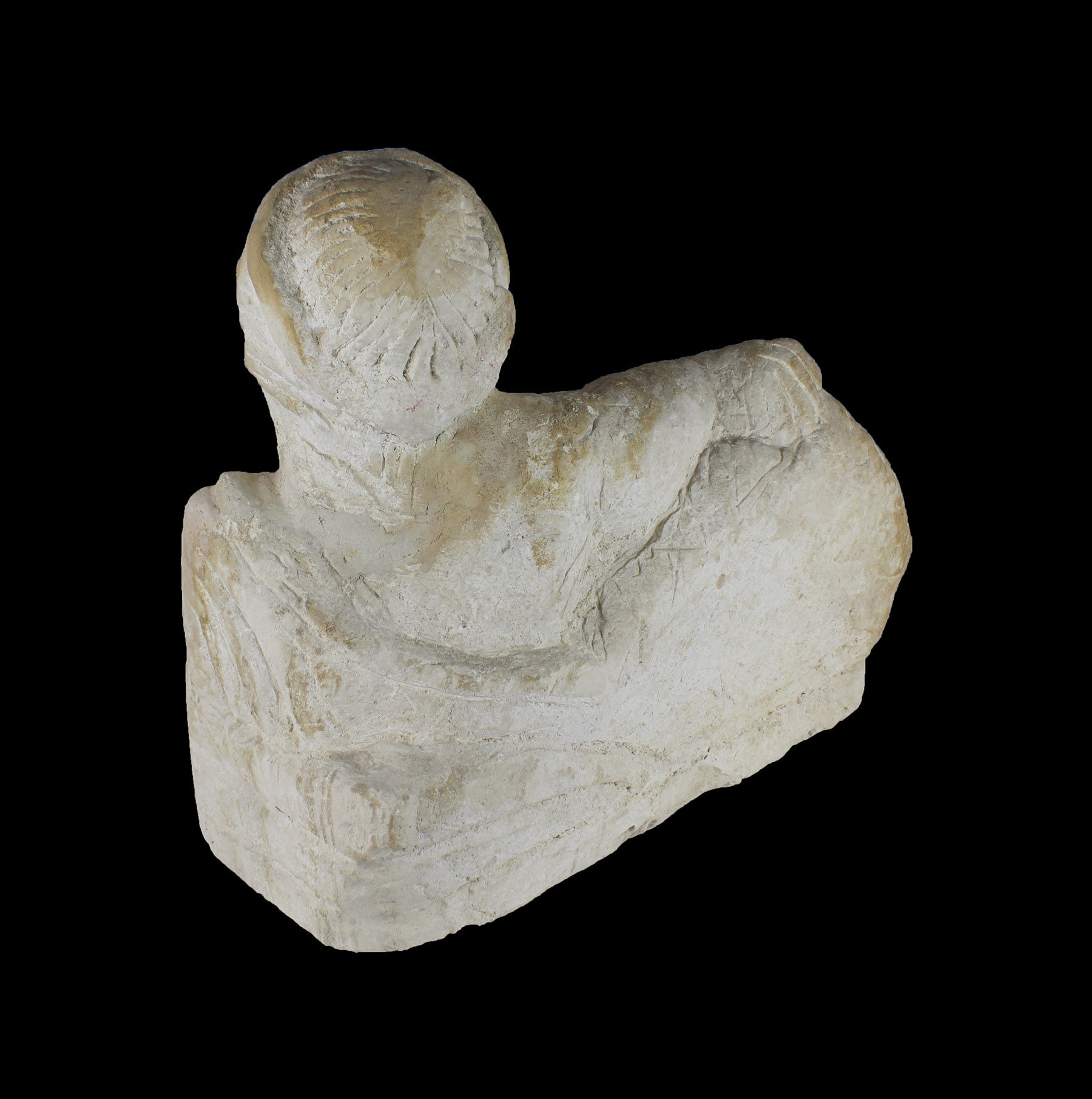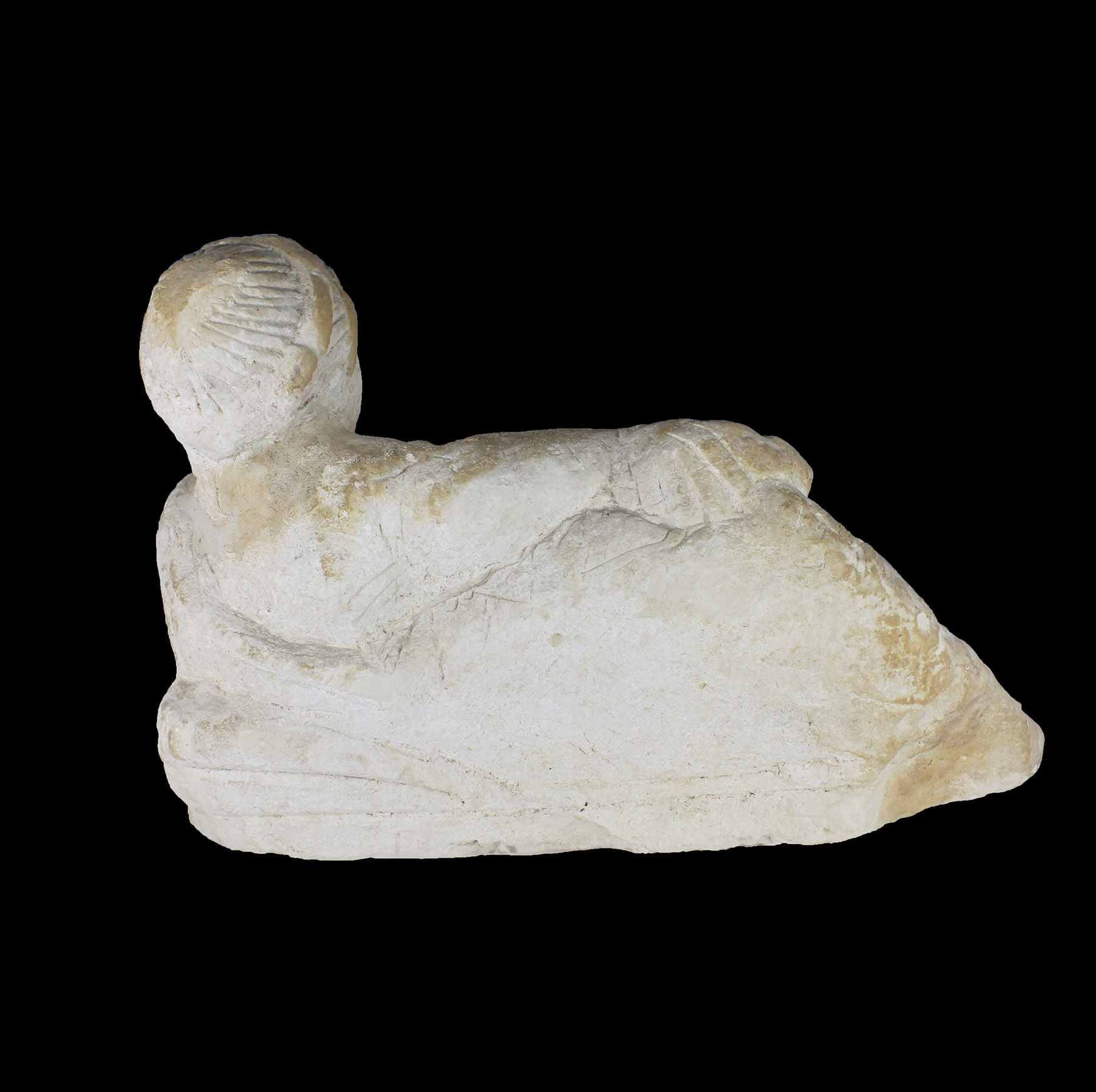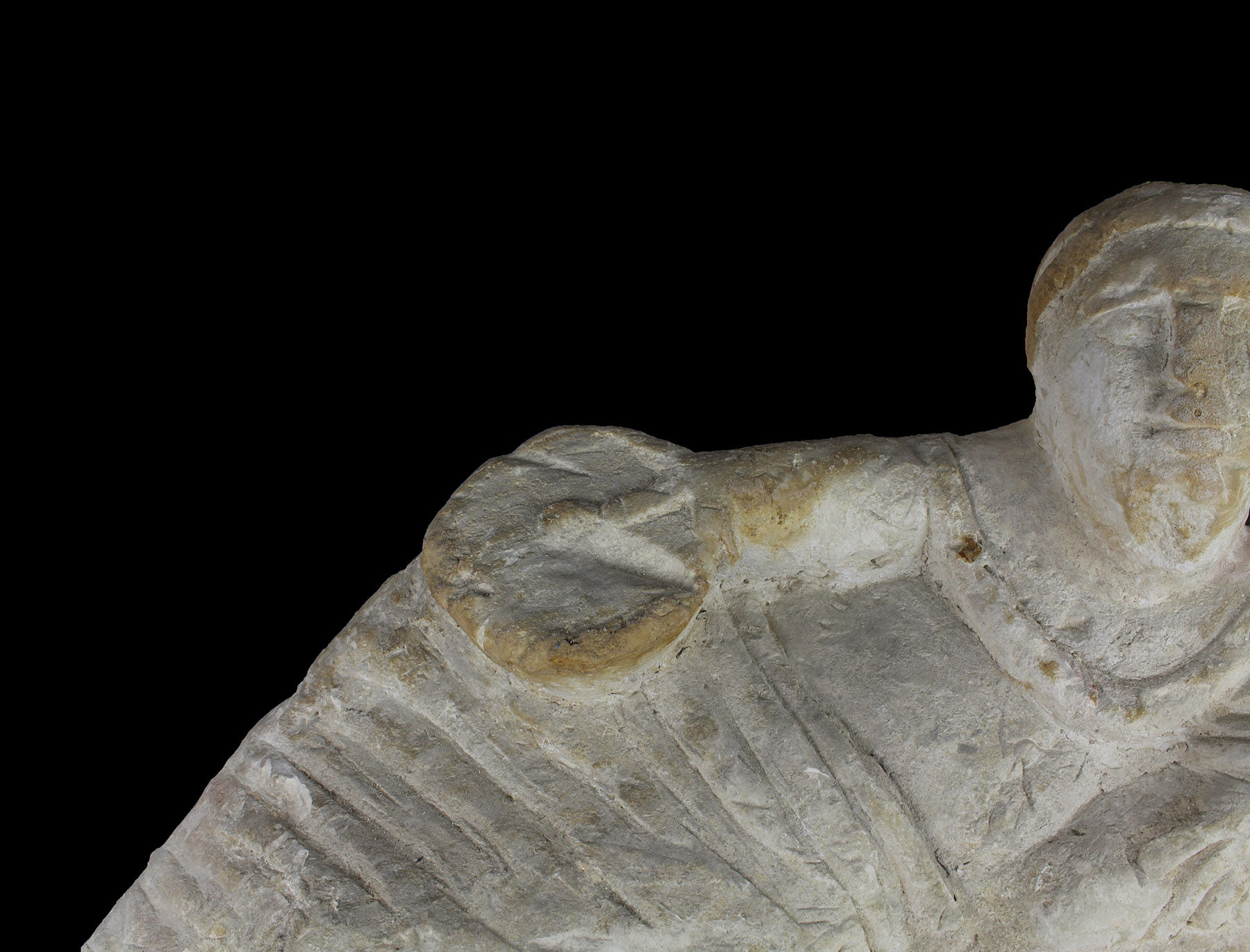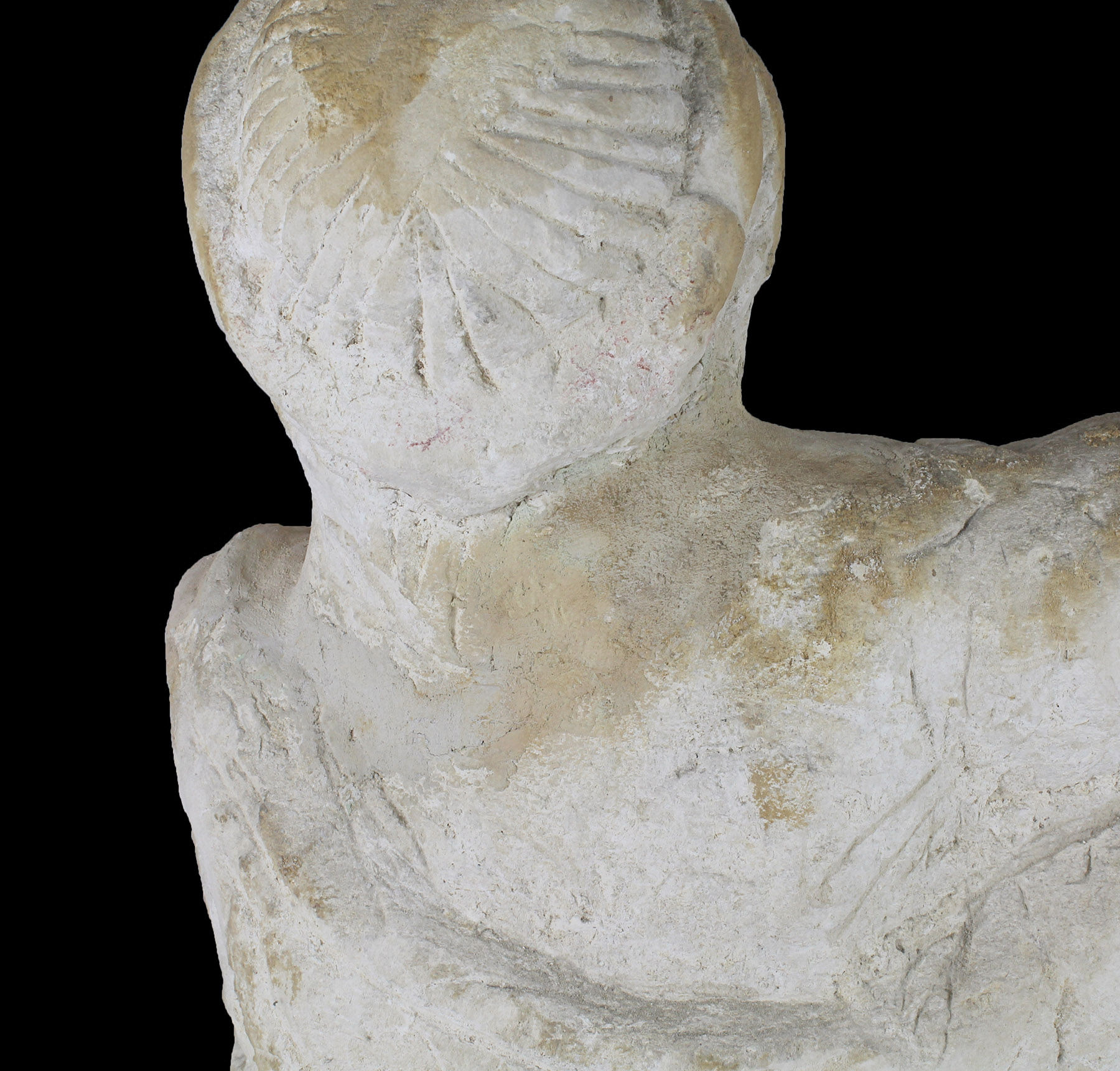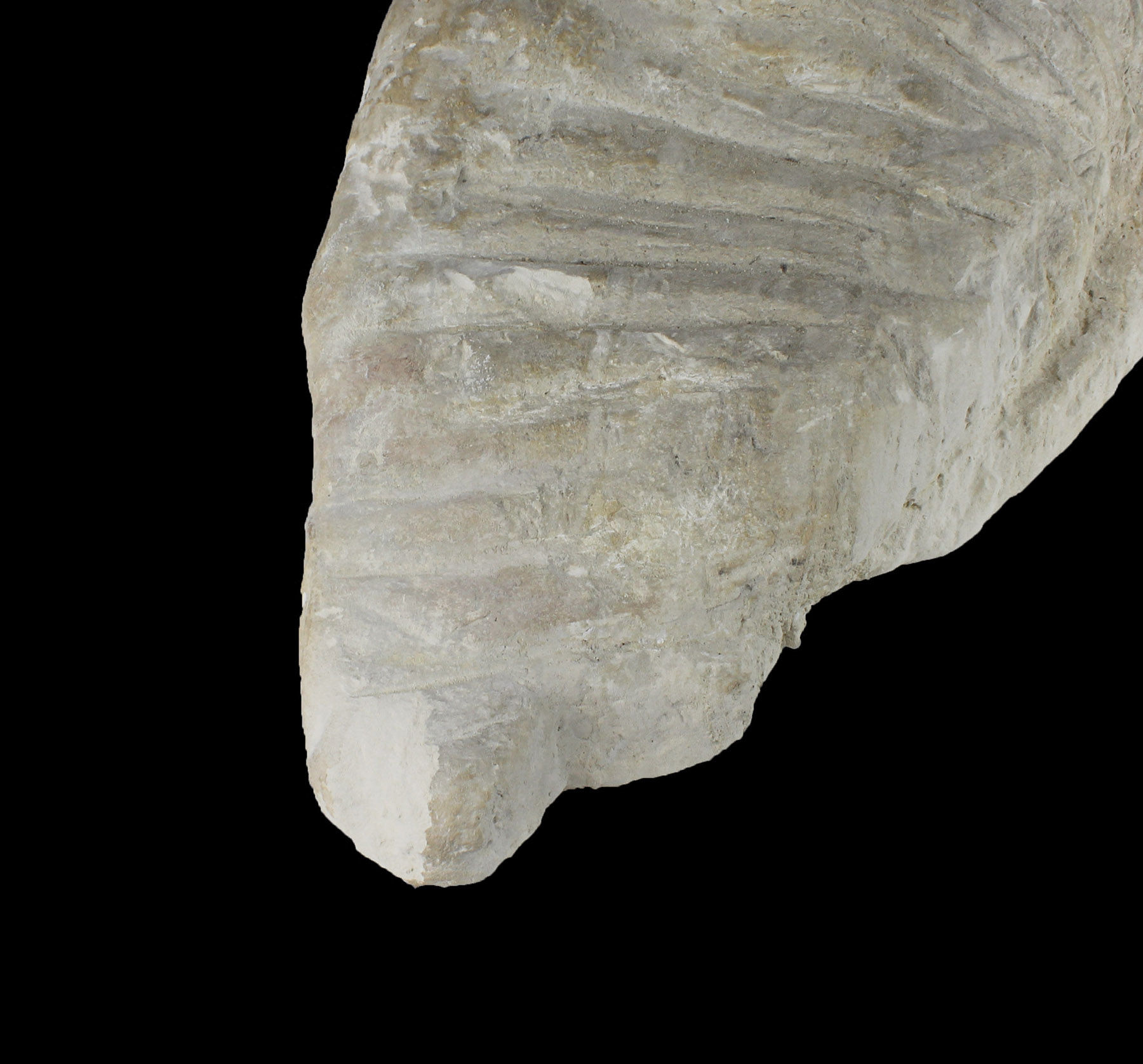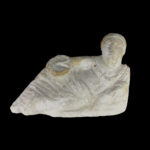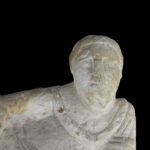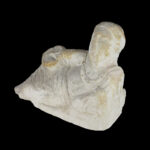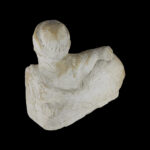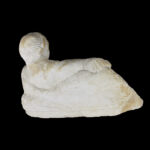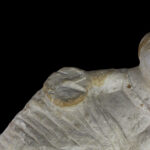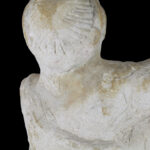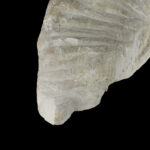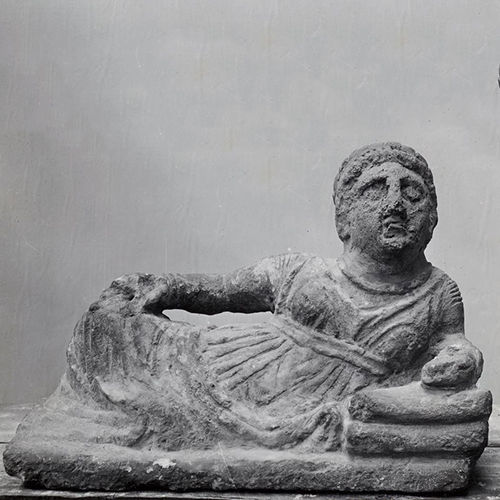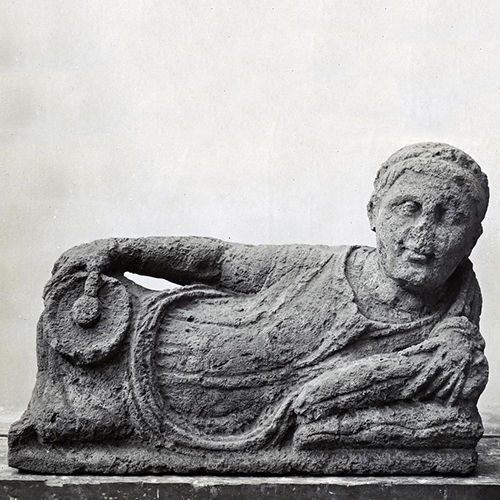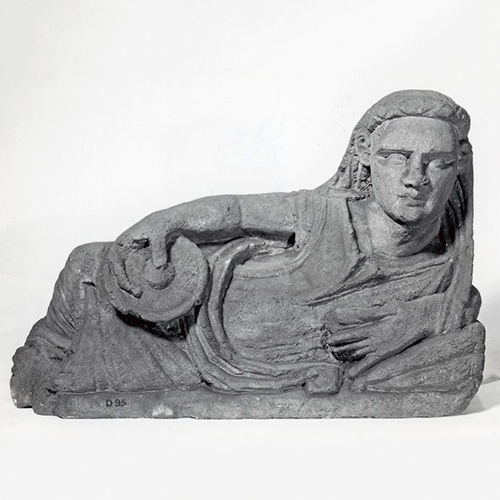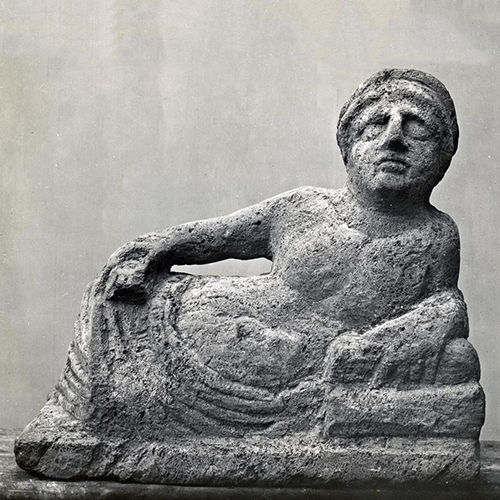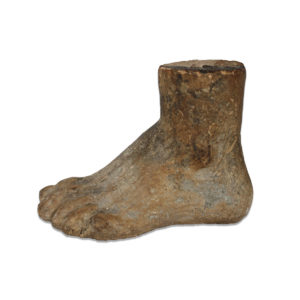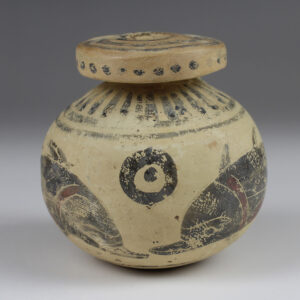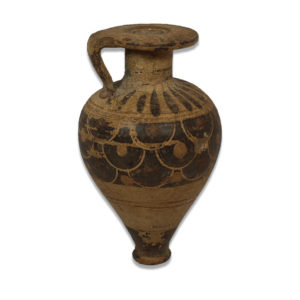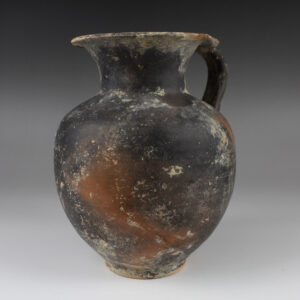Description
| ITEM | Lid of a cinerary urn with a reclining figure |
| MATERIAL | Limestone |
| CULTURE | Etruscan |
| PERIOD | 200 – 50 B.C |
| DIMENSIONS | 430 mm x 670 mm x 210 mm |
| CONDITION | Restored |
| PROVENANCE | Ex Dutch private collection, Mr. H.C.F.A. Van der A. (1904-1980). Bought in the period 1960 – 1978 |
The Etruscans, like people today, practiced two forms of burial, cremation and inhumation. The remains of the deceased were placed in a casket that was set up in a family tomb. Inhumation required a life-size sarcophagus. If cremation was chosen the casket was naturally of small dimensions, since it had to hold only the ashes of the deceased.
Some of the most amazing works remaining are funerary. The Etruscans had a built cities for their dead with striking rock cut tombs. These tombs reflected the art, architecture and culture of Etruria. The walls of many of these tombs were covered with colorful frescoes celebrating nature and the good life. Some show cheerful scenes of banquets, games and musicians others show scenes of nature and ritual.
Cinerary Urns were fashioned in many different styles over time. Some are gorgeous lidded vessels with slip painting and additions of small maodels of votive vessels. A form that is echoed in other world cultures through time is a figurative vessel with a “portrait” of the deceased. Another is a small sarcophagus form that had many permutations over time, some are very smiple and othere extremely ornate.


